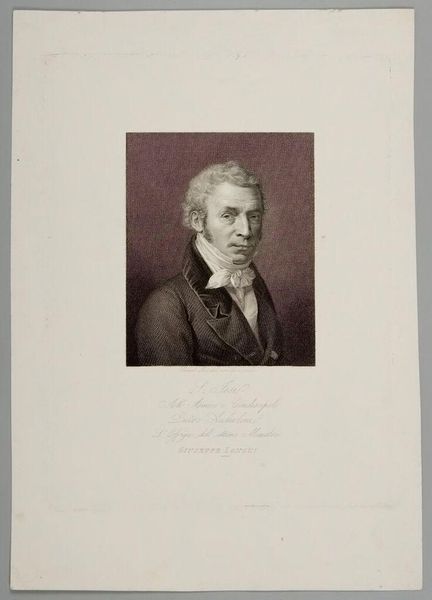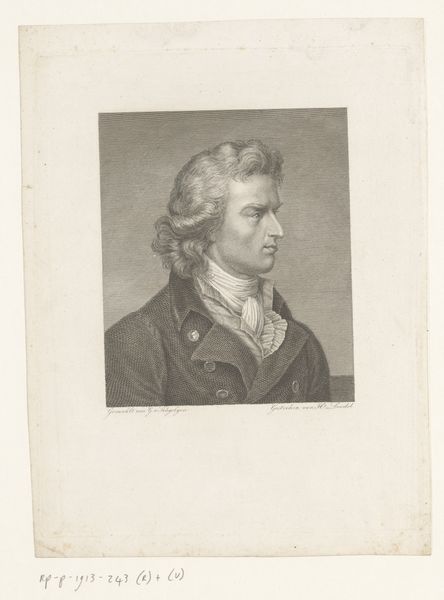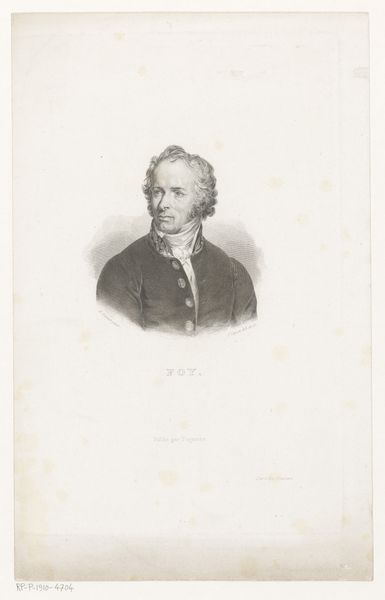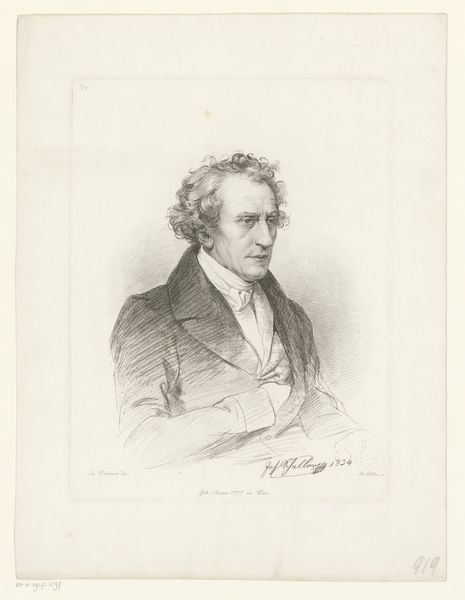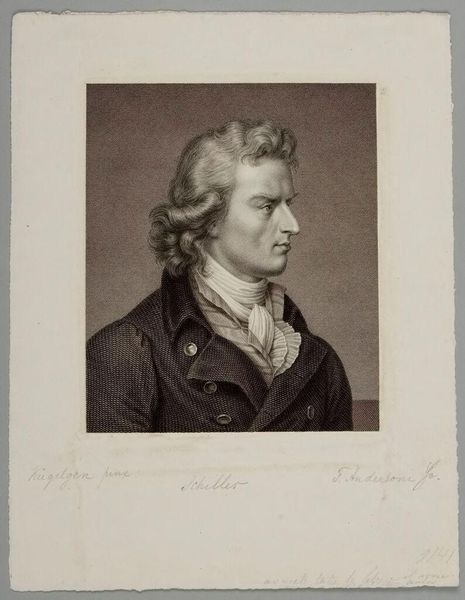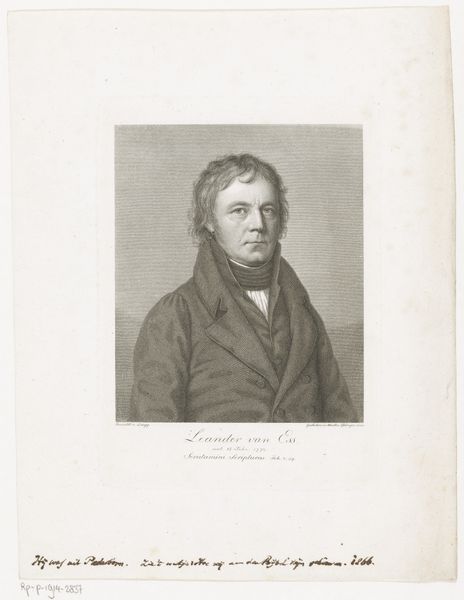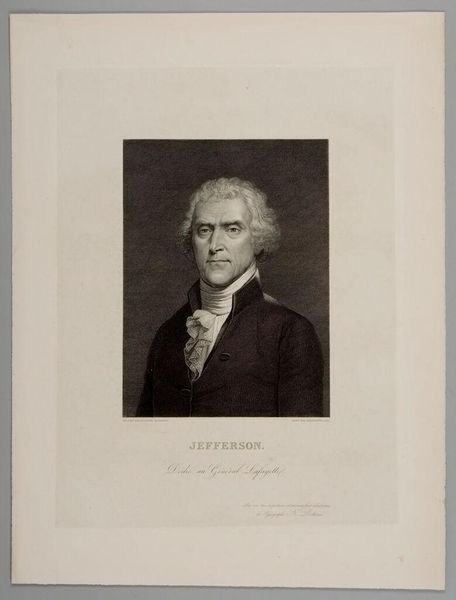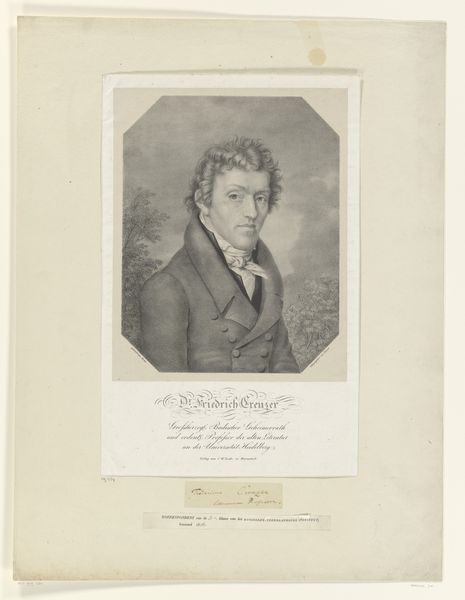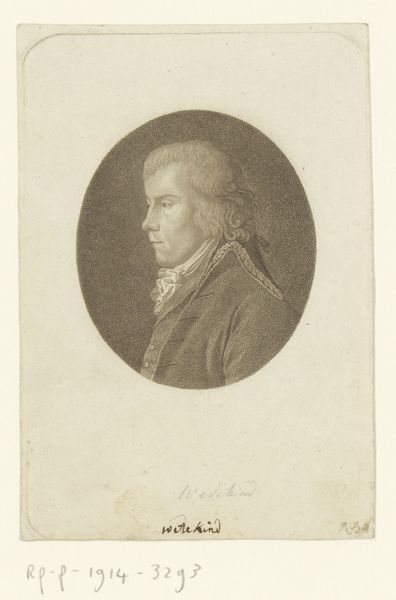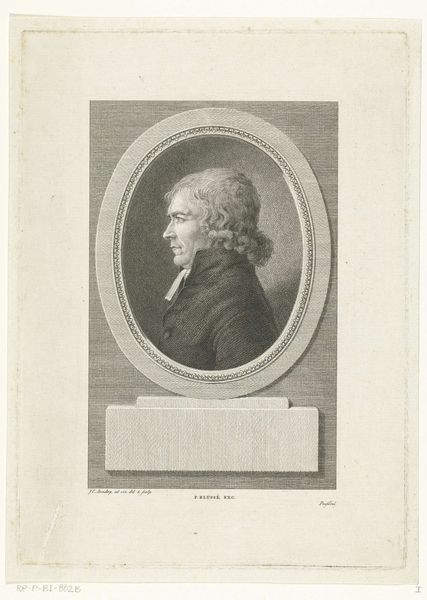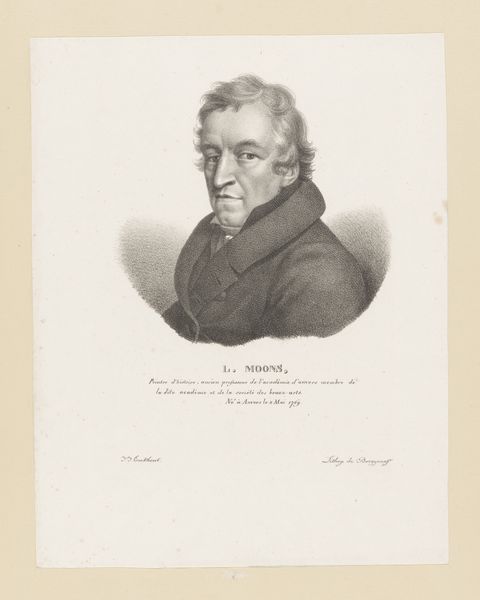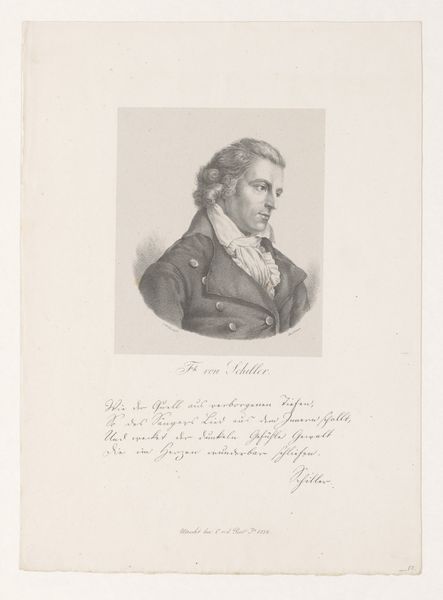
Copyright: CC0 1.0
Editor: This print, "Schiller" by James Posselwhite, captures the German poet in profile. The crisp lines suggest a neoclassical reverence. How did images like this circulate and shape public perception of figures like Schiller? Curator: Indeed. Consider this print not just as an image of Schiller, but an artifact of its time. How did its availability, its intended audience, and the socio-political context influence its meaning? Was it meant for private admiration or public display? Editor: I guess it depends on who bought it. Was it displayed in coffee houses, contributing to a wider cultural conversation? Curator: Precisely! And how did the artist's choices—the style, the medium—contribute to Schiller's public persona? Was he being presented as a philosopher, a revolutionary, or something else entirely? These portraits played an active role in shaping and disseminating cultural values. Editor: So, looking at art means looking at the bigger picture of how it was used and understood in its time. Curator: Exactly! The image is only the start. The real story lies in its journey through society.
Comments
No comments
Be the first to comment and join the conversation on the ultimate creative platform.
